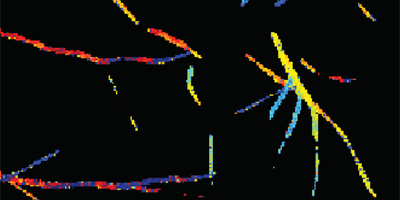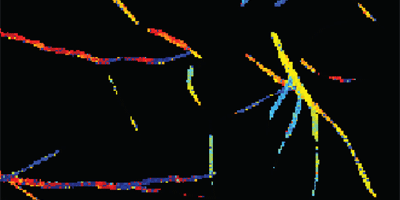Make No Assumptions
Second Harmonic Generation (SHG) microscopy is a widely used technique to image biomolecular assemblies in complex samples. The technique measures the second harmonic of light emitted by a molecule in the presence of an intense polarized light source and is sensitive to a molecule’s orientation because the emitted light depends on the angle between the incident light’s polarization and the molecule. Writing in Physical Review A, Julien Duboisset and colleagues at the Fresnel Institute in Marseilles, France, propose, and experimentally test, a method that circumvents a previous limitation of the polarized SHG microscopy technique.
Polarized SHG microscopy has been used to deduce the molecular orientation of molecular materials, collagen, and muscle structure in tissues. However, to date, gleaning structural information from the microscopy data relied on assumed models of the molecules’ spatial orientations. Such models typically fail to give a complete picture of the molecular orientation, primarily because there is no way to validate them.
Duboisset et al.’s method is a generic approach that does not rely on a specific model of the orientation of the molecules in the sample and includes possible geometries that were not previously accessible. They applied their method to the imaging of assemblies in isolated collagen fibers, which are a major component of connective tissue. This method of imaging has potential applications for studying both molecular and biological materials. – Frank Narducci





